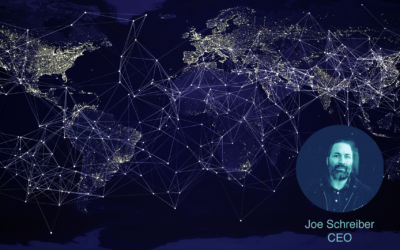Reflecting on 2023, we witnessed the pivotal role of IT asset management in simplifying compliance mandates and managing cyber asset inventories. As detailed in appNovi’s previous blog, this focus has set a robust foundation. For 2024, our perspective pivots to integrating security and telemetry data with IT asset management, evolving towards a comprehensive attack surface mapping strategy. This data convergence enables enterprise security teams to leverage their existing tech stack to optimize risk management despite ongoing changes.
The Evolution of IT Asset Management
In 2023, IT asset management was primarily about cataloging and managing IT resources accurately. A significant achievement was the deduplication of assets, effectively correlating IPs, interfaces, and hosts at specific moments. This year, we continue to expand on this foundation by integrating granular security and telemetry data with our customers’ IT asset data. This integration is not merely an additive process but a transformative one, providing insights into which assets are most at risk and exposed to potential exploitation by attackers.
Understanding Attack Surface Mapping
Attack surface mapping represents a strategic evolution in cybersecurity. It involves a comprehensive assessment of all the points where an unauthorized user can try to enter or extract data. This process goes beyond traditional IT asset management by utilizing all available security tools to paint a holistic picture of an organization’s security posture. It enables security teams to prioritize actions effectively on a micro level, based on the macro understanding of the network’s vulnerabilities. Rather than looking at the sea of alerts and chasing those with the most severe scores, security teams can focus on the handful of alerts that present the most imminent and significant risk to the business.
The Importance of This Evolution
The sheer volume of vulnerabilities compared to the limited mitigation resources necessitates the transition to attack surface mapping. Attack surface mapping prioritizes efforts based on the contextual significance of assets and their impact on business operations. It’s a shift from chasing risks based on objective scores to a more nuanced approach that considers environmental exposure and business criticality. In short, security can identify and fix the most glaring security concerns with efficiency on a continued basis. Integration with orchestrators or workflow products can provide a capability of “self-healing” for organizations trustful of their playbooks and automated actions.
To illustrate this, consider the common security control of Endpoint Detection and Response (EDR). Numerous assets might be missing EDR agents, yet the capacity to install these agents is constrained. If an enterprise employs an orchestration integrated with endpoint management capabilities, assets missing their EDR agents can have the playbook/workflow triggered. Automating the repeated analysis of asset data coupled with automated outcomes enables a regularly monitored and reduced attack surface.
Integrating Security and Telemetry Data
Incorporating security data, like threat intelligence, into IT asset management enhances the depth of asset understanding. The role of telemetry data becomes crucial, offering real-time insights into asset status. Consider an asset with a medium-risk vulnerability that might not initially seem pressing. However, if network telemetry indicates that this asset has internet connectivity, matching the network service needed for exploiting the vulnerability, its risk profile changes dramatically. This level of detail is pivotal in transitioning from a generic risk-based approach to a contextually aware security strategy. Security teams have historically focused on what is objectively the most risky – attack surface mapping enables them to apply the subjective perspective that is unique to their environment.
Benefits of Attack Surface Mapping
This approach offers a wide set of benefits:
- Improved Vulnerability Management and Prioritization
- By understanding the complete attack surface, enterprises can better identify and prioritize vulnerabilities.
- Enhanced Risk Assessment and Reduction
- Providing a broader context for each asset allows for more accurate risk assessments.
- Optimized Incident Response
- With a clearer understanding of the attack surface, responses to incidents can be more targeted and effective.
Gartner’s 2024 analysis corroborates the significance of attack surface mapping in modern cybersecurity practices “As organizational attack surfaces expand due to increased connectivity, use of SaaS and cloud applications, companies require a broader range of visibility and a central place to constantly monitor for threats and exposure.”
Implementing Attack Surface Mapping in Enterprises
Transitioning to attack surface mapping involves leveraging existing tools and investments. Enterprises must anticipate and overcome challenges such as integrating disparate data sources and ensuring data accuracy. Nearly every enterprise uses a SIEM or datalake to aggregate logs – these data wells can be readily turned into data fountains through which the relevant logs are fed and normalized to leverage telemetry in attack surface mapping. The inclusion of alerts provides an additional layer of refinement for prioritization, as the immediacy of threats can be understood and incorporated.
Acclimating to current and future tooling
In this exploration of the shift from traditional IT asset management to comprehensive attack surface mapping, we recognize a strategic imperative for enterprise security in 2024 and beyond. This evolution is critical in an era where enterprises increasingly adopt a platform approach through vendor consolidation. This trend towards reliance on a single vendor for all security tooling and services needs must be balanced against the reality that IT and security are deeply intertwined.
Many enterprises find themselves straddling a line between vendor consolidation and the continued use of a mix of best-of-breed tools or those already integrated into their operations. For these organizations, the challenge and opportunity lie in leveraging the strengths of both approaches. Attack surface mapping, in this context, becomes a pivotal strategy. It requires not only capitalizing on the successes in asset management but also harnessing the diverse tools and capabilities available to paint a complete and accurate picture of the enterprise’s security environment.
As enterprises navigate this complex landscape, the key is to strategically align their security posture with their operational realities and long-term objectives. Whether fully embracing vendor consolidation or maintaining a varied toolkit, the goal remains the same: to achieve a holistic understanding and management of the attack surface. This is not merely a technical upgrade but a fundamental shift in how we approach and ensure enterprise security in an increasingly digital world.


